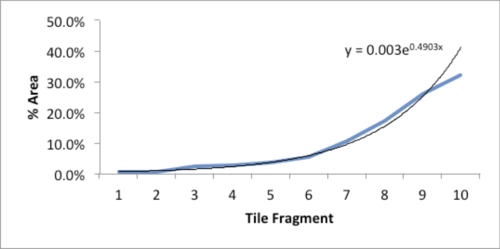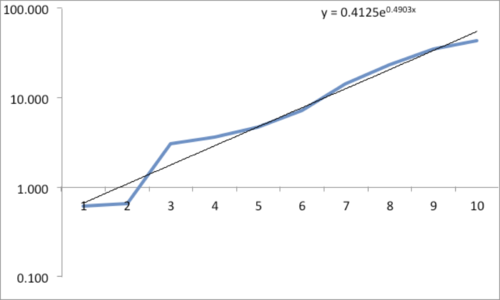Sandbox: Difference between revisions
| Line 11: | Line 11: | ||
==In progress== | ==In progress== | ||
[http://www.latimes.com/local/lanow/la-me-ln-homeless-count-analysis-20180711-story.html More sidewalk tents, but fewer people living in them? The 2018 homeless count's new math]<br> | |||
''Los Angeles Times'' | |||
---- | |||
[https://medium.com/pew-research-center-decoded Decoded] | [https://medium.com/pew-research-center-decoded Decoded] | ||
---- | ---- | ||
Revision as of 22:08, 25 July 2018
Forsooth
Quotations
“We know that people tend to overestimate the frequency of well-publicized, spectacular events compared with more commonplace ones; this is a well-understood phenomenon in the literature of risk assessment and leads to the truism that when statistics plays folklore, folklore always wins in a rout.”
In progress
More sidewalk tents, but fewer people living in them? The 2018 homeless count's new math
Los Angeles Times
That huge Mediterranean diet study was flawed. But was it wrong?
by Gina Kolata, New York Times, 13 June 2018
Why are the death tolls in Puerto Rico from Hurricane Maria so different?
by Sheri Fink, New York Times, 2 June 2018
The 2016 exit polls led us to misinterpret the 2016 election
by Thomas Edsall, New York Times, 29 March 2018
2017 Statistic of the year
from the Royal Statistical Society
Force overtime? Or go for the win?
by Jesse Walker, Jane L. Risen, Thomas Gilovich and Richard Thaler , New York Times, 27 February 2018
A case for math, not ‘gobbledygook,’ in judging partisan voting maps
by Adam Liptak, New York Times, 15 January 2018
It’s a fact: Supreme Court errors aren’t hard to find (ProPublica, 17 Oct 2017)
https://www.nytimes.com/2018/01/17/us/politics/factcheck-trump-black-americans-support.html Trump Falsely Claims His Approval Among Black Americans Has Doubled]
by Linda Qiu, New York Times, 17 January 2018
What explains U.S. mass shootings? International comparisons suggest an answer
by Max Fisher and Josh Keller , New York Times, 7 November 2017
Here's Why Sometimes Correlation Does Actually Imply Causation
The new front in the gerrymandering wars: Democracy vs. math
Evaluating Partisan Gerrymandering in Wisconsin
How computers turned gerrymandering into a science
by Jordan Ellenberg, Sunday Review, New York Times, 6 October 2017
What Exxon Mobil didn’t say about climate change
by Geoffrey Supran and Naomi Oreskes, New York Times, 22 August 2017
Facebook digital ads figures differ from census data: analyst
Some math doodles
<math>P \left({A_1 \cup A_2}\right) = P\left({A_1}\right) + P\left({A_2}\right) -P \left({A_1 \cap A_2}\right)</math>
<math>P(E) = {n \choose k} p^k (1-p)^{ n-k}</math>
<math>\hat{p}(H|H)</math>
<math>\hat{p}(H|HH)</math>
Accidental insights
My collective understanding of Power Laws would fit beneath the shallow end of the long tail. Curiosity, however, easily fills the fat end. I long have been intrigued by the concept and the surprisingly common appearance of power laws in varied natural, social and organizational dynamics. But, am I just seeing a statistical novelty or is there meaning and utility in Power Law relationships? Here’s a case in point.
While carrying a pair of 10 lb. hand weights one, by chance, slipped from my grasp and fell onto a piece of ceramic tile I had left on the carpeted floor. The fractured tile was inconsequential, meant for the trash.

As I stared, slightly annoyed, at the mess, a favorite maxim of the Greek philosopher, Epictetus, came to mind: “On the occasion of every accident that befalls you, turn to yourself and ask what power you have to put it to use.” Could this array of large and small polygons form a Power Law? With curiosity piqued, I collected all the fragments and measured the area of each piece.
| Piece | Sq. Inches | % of Total |
|---|---|---|
| 1 | 43.25 | 31.9% |
| 2 | 35.25 | 26.0% |
| 3 | 23.25 | 17.2% |
| 4 | 14.10 | 10.4% |
| 5 | 7.10 | 5.2% |
| 6 | 4.70 | 3.5% |
| 7 | 3.60 | 2.7% |
| 8 | 3.03 | 2.2% |
| 9 | 0.66 | 0.5% |
| 10 | 0.61 | 0.5% |

The data and plot look like a Power Law distribution. The first plot is an exponential fit of percent total area. The second plot is same data on a log normal format. Clue: Ok, data fits a straight line. I found myself again in the shallow end of the knowledge curve. Does the data reflect a Power Law or something else, and if it does what does it reflect? What insights can I gain from this accident? Favorite maxims of Epictetus and Pasteur echoed in my head: “On the occasion of every accident that befalls you, remember to turn to yourself and inquire what power you have to turn it to use” and “Chance favors only the prepared mind.”

My “prepared” mind searched for answers, leading me down varied learning paths. Tapping the power of networks, I dropped a note to Chance News editor Bill Peterson. His quick web search surfaced a story from Nature News on research by Hans Herrmann, et. al. Shattered eggs reveal secrets of explosions. As described there, researchers have found power-law relationships for the fragments produced by shattering a pane of glass or breaking a solid object, such as a stone. Seems there is a science underpinning how things break and explode; potentially useful in Forensic reconstructions. Bill also provided a link to a vignette from CRAN describing a maximum likelihood procedure for fitting a Power Law relationship. I am now learning my way through that.
Submitted by William Montante